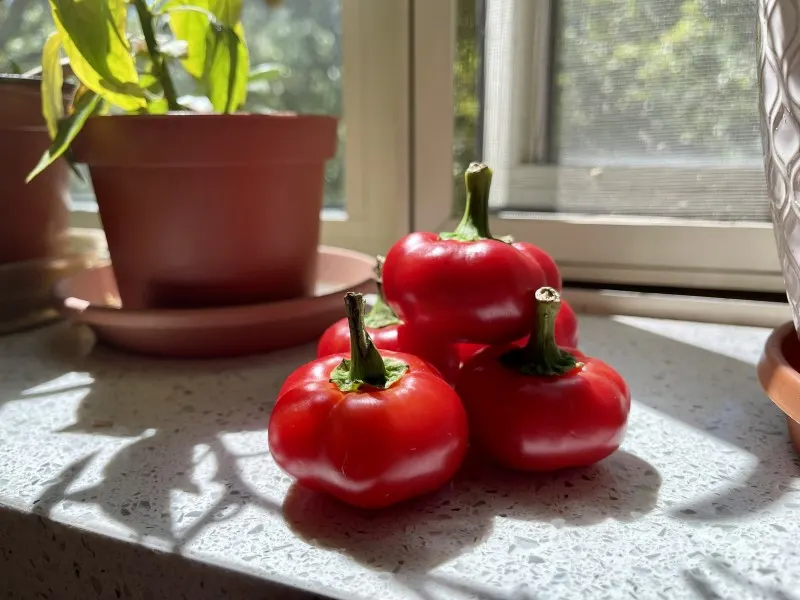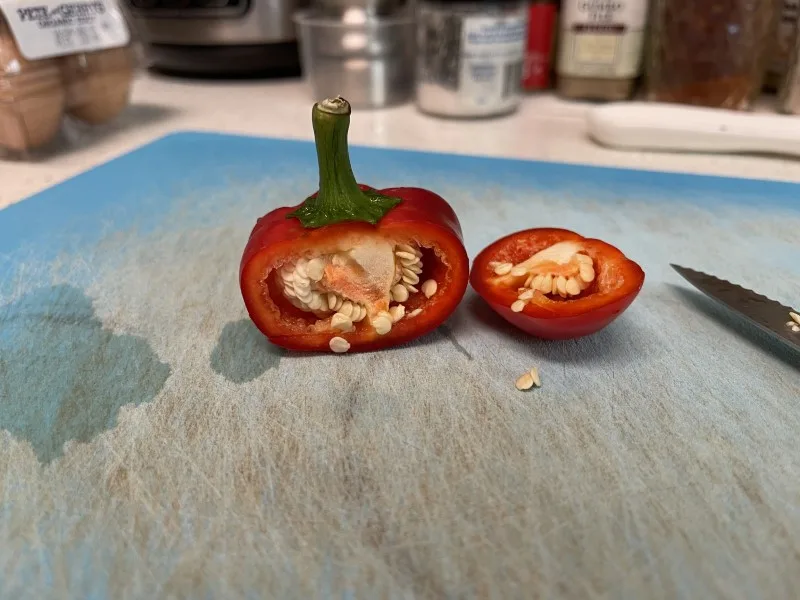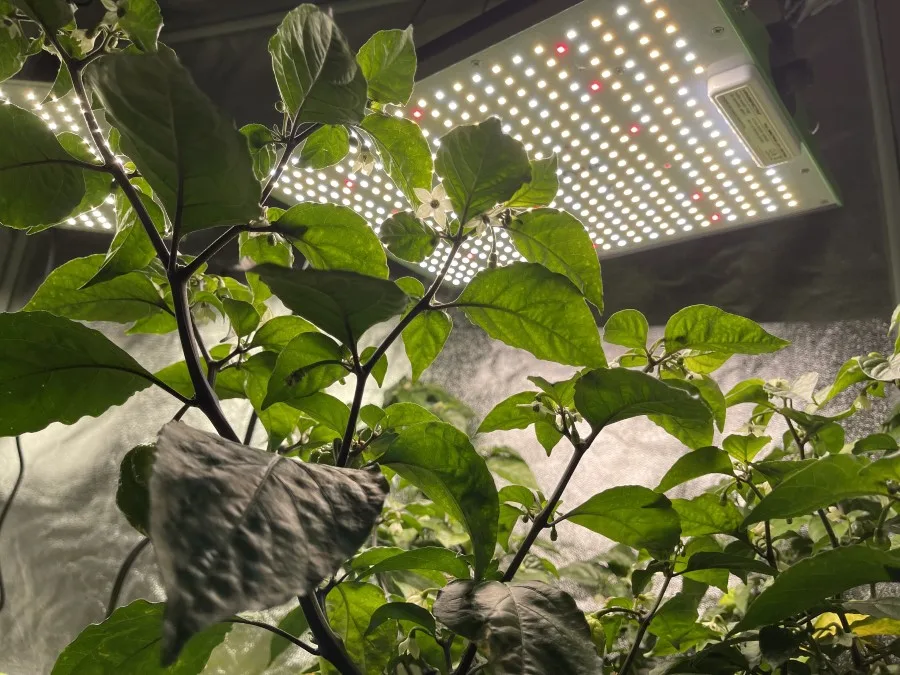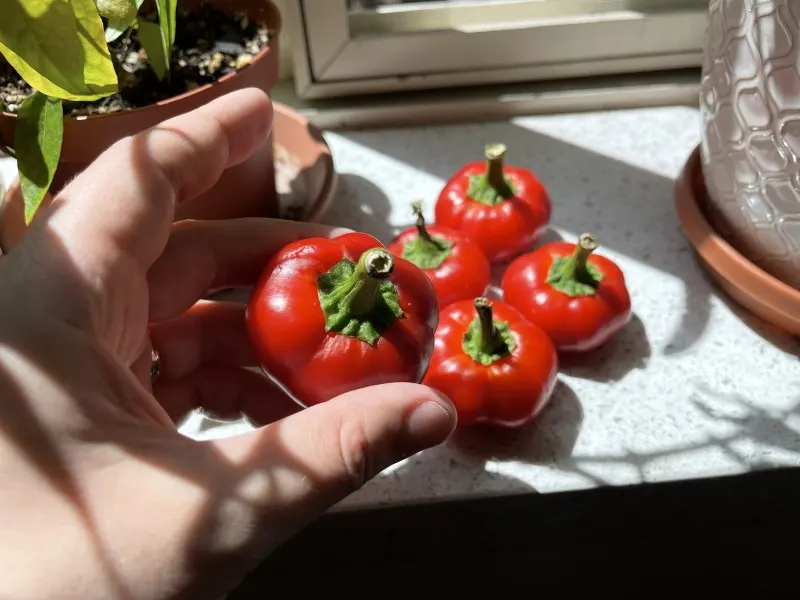Sweet Piquanté or Juanita peppers are flavorful, sweet, and mildly spicy, meaning anyone can enjoy them. Some people might know this pepper as the Peppadew® pepper, which is a brand that sells pickled Sweet Piquanté peppers. They make great additions to various recipes, so growing your own Sweet Piquanté peppers is quite rewarding. After all, peppers taste better when you grow them yourself!
Sweet Piquanté peppers are best planted in January if you live in the Northern Hemisphere and take around eight months to develop fully. They are not very resilient plants, so care needs to be taken when growing them. Sweet Piquanté peppers are perennials, but annual reseeding is advised if you are unable to overwinter them properly.
This article will provide a complete, step-by-step guide on growing Sweet Piquanté peppers. We’ll also discuss what soil and fertilizers you should use, how you should water your plants, whether you need to prune these plants, and how long you’ll have to wait to harvest.

Step-by-Step Guide for Growing Sweet Piquanté Peppers (From Seed to Fruiting Stage)
Growing Sweet Piquanté peppers can seem complicated at first. Few people grow them, and there appears to be little information about them on the internet.
If you’re a beginner who feels like this is all too overwhelming, don’t worry; you’re in luck. We’ve compiled a step-by-step guide on growing Sweet Piquanté peppers that will cover the entire growing phase, from seed to fruition.
Acquiring Seeds to Grow Sweet Piquanté Peppers
First, you’ll need to acquire some seeds to grow Sweet Piquanté peppers. Unfortunately, this isn’t as easy as going to your local gardening center or nursery. But, you should be able to find the seeds online, and they come in a variety of names including Sweet Piquanté peppers, Juanita peppers, Malawi Piquanté peppers, or South African Sweet Piquanté peppers. I found seeds by going to a farmers market and purchasing some whole Sweet Piquanté peppers.
If you’re looking for the branded Sweet Piquanté peppers called Peppadew® pepper, you’ll likely have to acquire the seeds directly from the official Peppadew® International company. Peppadew® International has strict regulations in place to discourage people from acquiring the pepper’s seed and growing it without the company’s permission.
Peppadew® International takes the protection of their seeds and distribution rights very seriously, to the point where they may even take legal action against farmers found to be selling seeds.

Seeding Stage
The good news is that once you have the seeds in hand, Sweet Piquanté peppers aren’t all that difficult to grow.
There are only a few things you need to watch out for, which we will, of course, cover.
But now, onto the first active part of the growing phase: Seeding.
- If you’re growing from scratch and live in the Northern Hemisphere, we advise you to plant your seeds as early as January because germination can take up to four weeks.
- Remember to leave some space between each seed/seedling so that they don’t become overcrowded once they’re grown. Plants that are too close to each other are forced to compete for sunlight and nutrients.
- Position your seed/seedlings in a way that they’re at least 30 cms or a foot away from each other. This will also give you an orderly row of plants, which is much easier to work with than a bunch of plants huddled together.
- Sow your seeds half an inch deep into the soil mixture and cover them up gently. Give the soil some water, too; make sure it’s moist but don’t go overboard. Stagnant water is a killer. We’ll talk more about how much water Sweet Piquanté peppers need in a later section of this guide.
- Ensure they get enough light. It can get a little tricky since Sweet Piquanté peppers do great under the full sun once they’re fully grown but they can be susceptible to heat damage as a seed/seedling.
Optional: some growers who reside in areas with the most extreme conditions initially grow the Sweet Piquanté peppers indoors in a pot, so the seedling isn’t harmed by direct, intense sunlight.
This also has the added benefit of protecting the developing plant from nighttime frosts, which aren’t all that uncommon in the early months of the year. Most peppers are particularly vulnerable to frost, so even one freezing night without protection can leave them damaged and wrinkled.
If you choose to grow them indoors at first, they’ll be ready to transplant to your outdoor garden when they’re a little bigger. If you planted in January, it’s safe to transplant the plants to your outdoor garden by mid to late February, but thus is also dependent on the climate where you live.

The Growth Phase
Now comes the growth phase. Come March, your Sweet Piquanté pepper plants will be growing rapidly and will have the potential to reach a few feet in height, given that their needs have been tended to.
The growth phase will last a few months, so growing a lively batch of Sweet Piquanté peppers does require persistence and dedication from your end.
Here is a list of the things you need to do during the growth phase to keep your Sweet Piquanté pepper plant healthy and get the best possible yield at harvest:
Use Fertilizers
Like many crops grown for their fruits, you want to use nutrient-rich fertilizer. It doesn’t have to be chemical, though: compost makes for excellent organic fertilizer.
Nutrient deficiencies can cause issues such as stunted growth, so be wary. The best first step to take is to find out the nutrient composition of your soil and then get fertilizer for whatever it is lacking.
The big three nutrients are Nitrogen, Phosphorus, and Potassium, also collectively abbreviated as NPK. Most fertilizers have these ingredients these days.
If you aren’t growing for commercial purposes and don’t really want to mess around with fertilization, you don’t have to. It’s only vitally important if there’s an existing nutrient deficiency in the soil. Otherwise, just use compost.
In fact, we recommend that you spread some compost around the base of your Sweet Piquanté pepper plants. Not only will it act as a fertilizer, but it will also aid water retention and prevent your plants from drying out.
The layer of compost can also act as a thermal insulator, protecting the roots of your plant in extreme sunlight or cold. The point is you definitely want to use compost if you can because the benefits are too good to miss out on.
Make Sure to Give the Sweet Piquanté Pepper Plant Plenty of Water
If you don’t have enough rainfall, it’s recommended to have an irrigation system in place, so your Sweet Piquanté pepper plants aren’t at risk of falling victim to thirst. Adult Sweet Piquanté pepper plants are somewhat resilient against dehydration, but you can’t rely on that to carry you through an inadequate watering system.
Even if the plant survives on little water, there’s a good chance you’ll see a deterioration in the quality and quantity of your pepper harvest.
If growing in your backyard garden, water the peppers generously at least once per week. Your watering routine can vary drastically based on the temperature and humidity of where you live, so you’ll have to check for signs of dehydration and adjust accordingly.
Make sure the soil around your Sweet Piquanté pepper plant is damp, but that there’s no stagnant water.
Watch Out for Nighttime Frosts, if Growing Outdoors
This is especially important because of how susceptible peppers are to frost. A frost is basically when temperatures go below the freezing point (0°C or 32°F). While it can happen during the day, it’s much more likely to happen during the night.
Frost is deadly—it causes the water within plant cells to freeze up and form ice crystals. These ice crystals are razor sharp and can easily tear open cell walls. On top of that, water expands when it turns to ice, furthering the damage caused and making sub-zero temperatures doubly dangerous to plant life.
You can get a good idea of whether there will be an upcoming nighttime frost by checking the weather. Following local gardening channels is also a good way to remain updated about weather conditions.
Sweet Piquanté peppers were originally found in South Africa and are used to the hotter, arid weather there, so they don’t have defensive adaptations against frost. If you suspect a frost is about to descend, provide your Sweet Piquanté pepper plant with cover and protection for the night.
If you’re interested to learn more about protecting pepper plants from frost, I wrote an entire post covering six ways to protect your pepper plants from frost.
Prune and Cut Back
The age-old technique of pruning and cutting back is effective, even when dealing with Sweet Piquanté peppers. It is a little different in this case, though. You don’t want to be cutting the plant unnecessarily. Only remove parts of the plant that are damaged or showing signs of rot.
Regular removal of unnecessary material from the plant ensures that all of the plant’s energy and resources are dedicated to growing new, healthy matter. Dead matter weighs down your plant and, if caused by pests or disease, can even spread damage to the healthier part of the plant.
Watch Out for Pests and Disease
Pests and diseases are always an issue when gardening or farming. And the Sweet Piquanté pepper is unfortunately not an exception to this rule. The two pests you have to watch out for, in particular, are fruit flies and bollworms.
Both of these pests feed on green matter and can cause considerable damage if left to their own devices for too long. Thankfully, pesticides for both of these critters are readily available both online and offline if you happen to need them. You can check out our post on organic pesticides for more information and to find the right solution for your needs.
As long as you respond to an infestation promptly, you won’t have any lasting effects. Usually, infestations only get out of hand if you let them reside for too long.
Diseases in Sweet Piquanté peppers are caused mostly by a nutrient deficiency. Damp and moist conditions can also cause fungal growth, so be wary of stagnant water or watering directly onto the plant. Let the Sweet Piquanté pepper plant enjoy the full sun; it will keep the plant healthy and discourage fungus growth.

Harvesting Stage
Your peppers will have fully grown and will be ready for you to harvest by mid-summer or early fall, at the latest. All you need to do now is to harvest the pepper and enjoy the fruit of your labors.
Sweet Piquanté pepper plants are perennials, so you can overwinter them, and they’ll bear fruit again next year, however they may provide a lower yield.
FAQs
Before you go, take a look at the most frequently asked questions so that nothing catches you off guard while you’re growing Sweet Piquanté peppers.
What Soil and Fertilizers Are Good for Sweet Piquanté Peppers?
The soil needs to be able to retain moisture but not allow water to stagnate as that can damage the plant’s roots. NPK fertilizers are great for Sweet Piquanté peppers, but organic compost is another option with numerous benefits.
How to Water Sweet Piquanté Peppers
Water Sweet Piquanté peppers a minimum of once per week and more often if you live in a hot and dry environment. Pour water until the soil is hydrated, but don’t overdo it to the point where the water begins to stagnate on top of the soil. Do not aim the stream of water directly at the plant foliage.
How to Prune Sweet Piquanté Peppers?
Cut off any weak, short, and spindly branches you see. These are often called ‘sucker branches’ and divert resources away from growth and fruit bearing. Also, remove any damaged, rotting, discolored, or dead matter from the plant immediately to ensure damage doesn’t spread.
How Long Does it Take for Sweet Piquanté Peppers To Ripen for Harvest?
From planting to harvesting, Sweet Piquanté peppers take about eight weeks to finish growing. The peppers themselves take only a few weeks to ripen fully; you’ll be able to tell whether a pepper is ripe for harvesting or not based on its color. Ripe Juanita peppers are bright red.
Final Thoughts
And there you have it. A complete guide on growing Sweet Piquanté peppers. Plant the seeds anytime from January to March, follow the detailed steps mentioned in the guide, and you’ll have a delectable batch of Sweet Piquanté peppers before the end of the year.
Pay extra attention to your watering routine and always be prepared for nighttime frosts. It is possible to ruin months of effort because of one simple oversight, so don’t underestimate the damage frost can cause.
